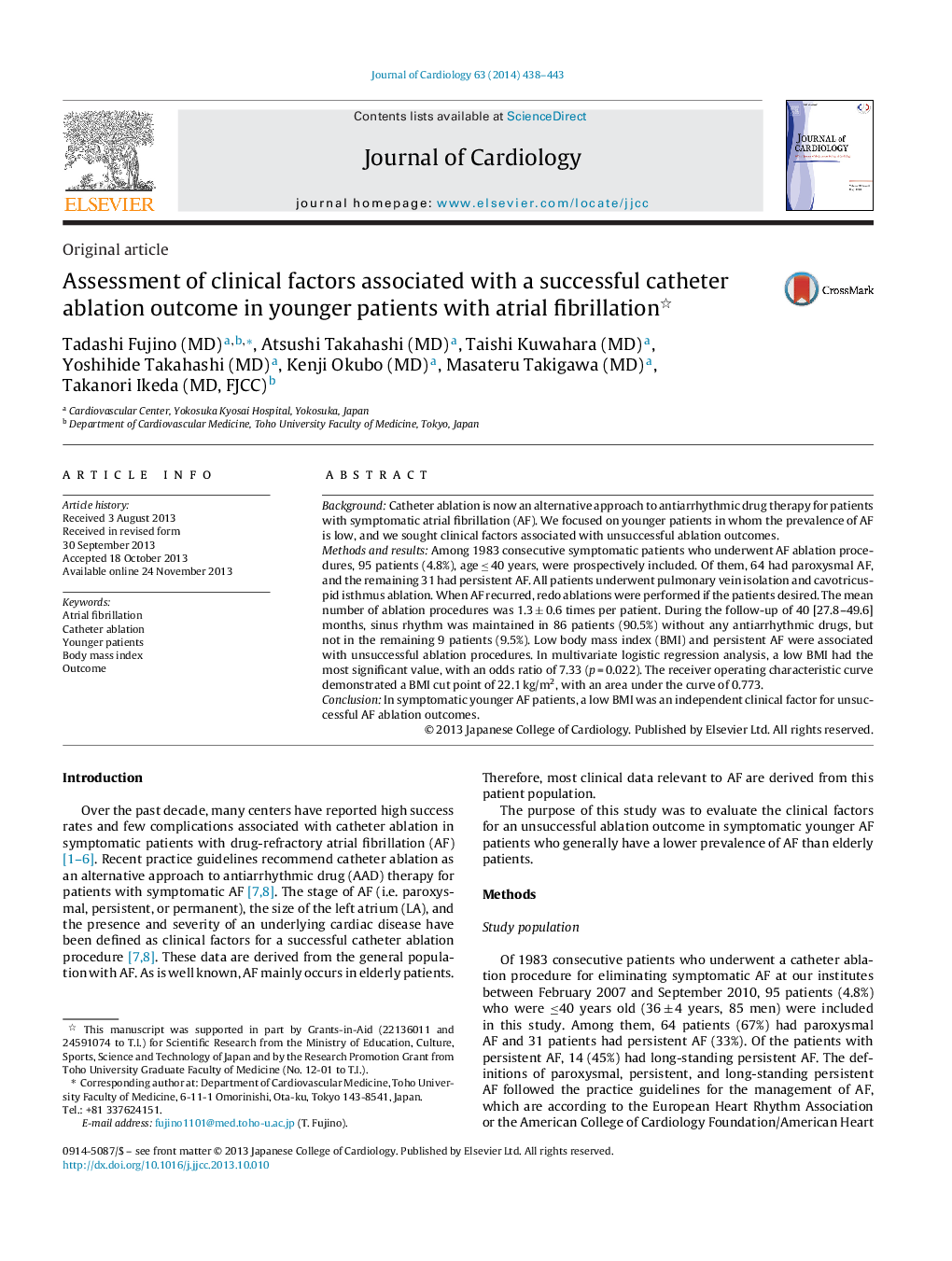| Article ID | Journal | Published Year | Pages | File Type |
|---|---|---|---|---|
| 2963027 | Journal of Cardiology | 2014 | 6 Pages |
BackgroundCatheter ablation is now an alternative approach to antiarrhythmic drug therapy for patients with symptomatic atrial fibrillation (AF). We focused on younger patients in whom the prevalence of AF is low, and we sought clinical factors associated with unsuccessful ablation outcomes.Methods and resultsAmong 1983 consecutive symptomatic patients who underwent AF ablation procedures, 95 patients (4.8%), age ≤ 40 years, were prospectively included. Of them, 64 had paroxysmal AF, and the remaining 31 had persistent AF. All patients underwent pulmonary vein isolation and cavotricuspid isthmus ablation. When AF recurred, redo ablations were performed if the patients desired. The mean number of ablation procedures was 1.3 ± 0.6 times per patient. During the follow-up of 40 [27.8–49.6] months, sinus rhythm was maintained in 86 patients (90.5%) without any antiarrhythmic drugs, but not in the remaining 9 patients (9.5%). Low body mass index (BMI) and persistent AF were associated with unsuccessful ablation procedures. In multivariate logistic regression analysis, a low BMI had the most significant value, with an odds ratio of 7.33 (p = 0.022). The receiver operating characteristic curve demonstrated a BMI cut point of 22.1 kg/m2, with an area under the curve of 0.773.ConclusionIn symptomatic younger AF patients, a low BMI was an independent clinical factor for unsuccessful AF ablation outcomes.
